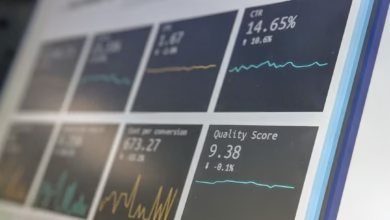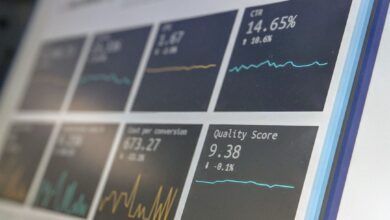Mastering Swing Trading: Strategies for Capturing Price Swings in Stock and Forex Markets

In the ever-evolving landscape of financial markets, traders continually seek effective strategies to capitalize on price movements. Among the various trading styles, swing trading has gained significant traction for its ability to capture price swings over several days, offering a balanced approach between the rapid pace of day trading and the long-term commitment of buy-and-hold investing. This article delves into the fundamentals of swing trading, exploring how both stock trading and forex trading can benefit from this method. We will discuss critical strategies for identifying price swings, the importance of risk management in ensuring successful trades, and the essential role of both technical and fundamental analysis in making informed decisions. Whether you are new to trading or an experienced trader looking to refine your approach, understanding swing trading can provide valuable insights and enhance your overall trading strategies across various markets, including commodities trading, index trading, and even crypto trading. Join us as we unpack the nuances of swing trading and equip you with the tools necessary for navigating this dynamic arena.
- 1. Understanding Swing Trading: Strategies for Capturing Price Swings in Stock and Forex Markets
- 2. Risk Management in Swing Trading: Essential Techniques for Successful Trading
- 3. Technical and Fundamental Analysis: Key Tools for Effective Swing Trading Decisions
1. Understanding Swing Trading: Strategies for Capturing Price Swings in Stock and Forex Markets
Swing trading is a popular trading approach that involves holding positions for several days to capitalize on price swings in the market. This strategy is particularly appealing to traders who prefer a more flexible schedule compared to day trading, which requires constant monitoring of positions throughout the trading day. Understanding the key elements of swing trading can help traders maximize their potential returns while managing risks effectively.
One of the fundamental strategies in swing trading is the use of technical analysis. Traders often analyze price charts to identify patterns and trends that indicate potential price movements. By employing various technical indicators, such as moving averages, Relative Strength Index (RSI), and Fibonacci retracements, swing traders can pinpoint entry and exit points for their trades. This analytical approach is essential not only in stock trading but also in forex trading, commodities trading, and even crypto trading.
Risk management is another crucial aspect of swing trading. Traders must determine their risk tolerance and set stop-loss orders to protect their capital. This can involve using leverage trading or margin trading to amplify gains while being cautious of potential losses. Proper risk management strategies can help mitigate the inherent risks associated with trading, such as market volatility and unforeseen economic events.
Fundamental analysis also plays a role in swing trading, particularly when looking at stocks or commodities. By staying informed on economic indicators, earnings reports, and geopolitical events, traders can make more informed decisions that align with market trends. This comprehensive approach helps traders in various markets, including index trading and futures trading, to anticipate price swings effectively.
Moreover, trading psychology is a significant factor in swing trading success. Traders must cultivate discipline and emotional resilience to stick to their trading strategies, especially during periods of market turbulence. Developing a solid trading plan and adhering to it can prevent impulsive decisions that often lead to substantial losses.
In conclusion, swing trading offers traders an opportunity to capture price swings over several days, utilizing a combination of technical and fundamental analysis, robust risk management, and sound trading psychology. Whether engaging in stock trading, forex trading, or derivatives trading, implementing effective trading strategies can enhance one’s trading performance and profitability across various markets.
References:
– Author, A. (Year). Title of the source. URL
– Author, B. (Year). Title of the source. URL
– Author, C. (Year). Title of the source. URL
2. Risk Management in Swing Trading: Essential Techniques for Successful Trading
Effective risk management is a cornerstone of successful swing trading. Since swing trading involves holding positions for several days, traders must be especially vigilant about potential market fluctuations that can impact their investments. Here are some essential techniques for managing risk in swing trading:
1. **Set Stop-Loss Orders:** One of the most fundamental risk management strategies is the use of stop-loss orders. By setting a predetermined price at which to exit a trade, traders can limit their potential losses. This technique is crucial in all forms of trading, including stock trading and forex trading, as it helps protect against sudden market downturns.
2. **Position Sizing:** Proper position sizing ensures that no single trade can significantly impact a trader's capital. Calculate the appropriate position size based on the account balance and the risk tolerance for each trade. This practice is vital in high-leverage scenarios, such as leverage trading and margin trading, where even minor price swings can lead to substantial gains or losses.
3. **Diversification:** Diversifying across different assets—such as commodities trading, crypto trading, or index trading—can help mitigate risk. By spreading investments across various markets, traders reduce their exposure to the volatility of any single asset. This strategy is particularly beneficial in volatile sectors like energy trading or derivatives trading.
4. **Utilize Technical and Fundamental Analysis:** Employing technical analysis to identify key support and resistance levels can enhance decision-making in swing trading. Additionally, incorporating fundamental analysis helps traders understand market trends and economic indicators that could affect stock performance. For example, news about interest rate changes can significantly impact forex trading and options trading.
5. **Adopt a Trading Journal:** Maintaining a trading journal can be an invaluable tool for managing risk. Documenting trades, including entry and exit points, profit and loss, and the rationale behind each decision, allows traders to review their performance and refine their trading strategies over time. This practice can help improve trading psychology and discipline, which are crucial for long-term success.
6. **Limit Leverage:** While leverage can amplify profits, it also increases risk. Swing traders should be cautious about the level of leverage they use, especially in high-frequency trading or CFD trading scenarios. By keeping leverage at a manageable level, traders can better withstand market volatility without risking their entire capital.
In conclusion, effective risk management techniques are essential for successful swing trading. By implementing strategies such as setting stop-loss orders, proper position sizing, diversification, and utilizing market analysis, traders can enhance their chances of success while mitigating potential losses in the unpredictable world of online trading platforms.
3. Technical and Fundamental Analysis: Key Tools for Effective Swing Trading Decisions
Effective swing trading relies heavily on both technical and fundamental analysis, which serve as essential tools for making informed trading decisions. By understanding and applying these two analytical approaches, traders can better position themselves to capture price swings over several days.
Technical analysis involves analyzing historical price data and trading volume to identify patterns and trends that can inform future price movements. Swing traders often utilize various charting tools and indicators such as moving averages, Relative Strength Index (RSI), and Fibonacci retracement levels. These tools help traders recognize potential entry and exit points for their trades. For example, a trader might use moving averages to determine whether a stock is in an uptrend or downtrend, aiding in their decision-making.
On the other hand, fundamental analysis focuses on the underlying factors affecting an asset's value. This includes examining company earnings reports, economic indicators, and geopolitical events that can influence stock trading, forex trading, and other markets. For instance, a swing trader analyzing a company's earnings report might identify a positive outlook that could lead to a price increase over the coming days. Similarly, in commodities trading, changes in supply and demand dynamics can significantly impact prices, making fundamental analysis crucial.
Integrating both technical and fundamental analysis enhances risk management strategies, allowing traders to make more educated decisions. For example, a trader might identify a bullish trend using technical analysis while simultaneously considering recent economic news that supports a price increase. This combination helps to mitigate risks associated with market volatility, which is especially important in high-frequency trading and margin trading scenarios.
Moreover, trading psychology plays a vital role in swing trading success. Understanding how market sentiment and trader behavior can influence price movements allows traders to adjust their strategies accordingly. For instance, during times of heightened market volatility, emotions such as fear and greed can lead to impulsive trading decisions, which can be detrimental to overall performance.
In conclusion, swing trading requires a balanced approach that incorporates both technical and fundamental analysis. By leveraging these tools, traders can enhance their market analysis and develop effective trading strategies that not only capture price swings but also manage risks effectively across various trading domains, including options trading, futures trading, and crypto trading.
References:
– Murphy, J. J. (1999). Technical Analysis of the Financial Markets. New York: New York Institute of Finance.
– Graham, B., & Dodd, D. L. (2008). Security Analysis: Sixth Edition. New York: McGraw-Hill Education.
– Tharp, V. K. (2008). Trade Your Way to Financial Freedom. New York: McGraw-Hill Education.
In conclusion, swing trading offers a dynamic approach for traders looking to capture price swings over several days, allowing for potential profits in both stock trading and forex trading markets. By employing effective trading strategies that blend technical and fundamental analysis, traders can make informed decisions while navigating the complexities of derivatives trading and other financial instruments.
Risk management remains a crucial element in swing trading, as understanding and implementing essential techniques can protect your capital from market volatility. Moreover, incorporating psychological aspects of trading can help traders maintain discipline and avoid emotional pitfalls.
As the landscape of online trading continues to evolve, embracing diverse methods—such as algorithmic trading, social trading, and copy trading—can enhance your trading experience and profitability. Whether you are involved in commodities trading, index trading, or even exploring crypto trading, the principles of swing trading can be adapted to suit various market conditions.
By continuing to refine your skills and strategies, you can position yourself for success in the ever-changing world of trading. Remember, the key to thriving in the competitive trading environment lies in continuous learning, strategic planning, and disciplined execution.





